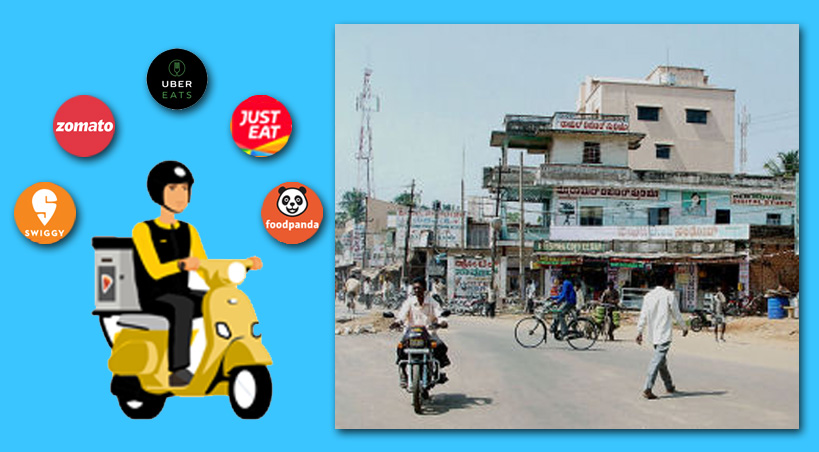Top 14 Ways to Advertise your Products

Some of the most popular ways to advertise your products are: – 1. News Papers 2. Magazines 3. Radio 4. TV 5. Wall Boards and Posters 6. Printed Bills/Pamphlets 7. Audio Announcements: 8. Hoardings 9. Hoardings on Trains and Buses 10. Ads on Products: 11. Personal Advertisements 12. Direct Mail 13. Telemarketing 14. Internet.
Product Advertisement
1. News Papers:
All over the world large number of newspapers is circulated. In India a number of large, small and medium size newspapers are daily published in different languages which are read by all literates from rich to poor. The circulations of each newspaper in various towns are available and certified figures of circulation are published regularly by Audit Bureau of Publications. The rate of publishing advertisement is regularly made available to ad agencies, producers, manufacturers and service providers.
In order to attract ads representatives of newspapers visit regularly ad agencies and advertisers to solicit support for their paper. They also bring special supplements from time to time on the occasion of festivals and events and also bring specials on particular area to attract advertisement. How effective they are to influence consumers behavior is not known, because adequate research has not been done in India in this regard. But gradually with the development of a number of channels of TV newspapers are not able to compete.
The one of the reason is that most of the persons read newspapers in a hurry and many readers do not look at advertisements unless they are able to attract attention of readers. Hence ad agencies are designing more attractive ads for dailies so that readers at least look towards them. Moreover, the advertisements for jobs, admissions, matrimonial etc. are most effective in newspapers because those interested regularly see these advertisements to find suitable for their requirements.
In order to make the readers task easier by newspapers classify them into various categories and have special features like Hindustan Times Career and Times of India Ascent. The special features like Education Times also attract readers for admissions in various courses and matrimonial for finding a suitable match. However, it appears that advertisements for FMCG and consumer durables are less frequently given in newspapers because their effectiveness has not been assessed properly and adequately.
2. Magazines:
There are a large number of magazines for general entertainment in various languages, many of which have attractive cover, art paper and lot of pictures. There are certain magazines to cater to children, others to housewives and there are many professional fortnightlies, and monthlies and a few bimonthlies and quarterlies.
These magazines and journals are read/studied at leisure and advertisements are also seen with attention for knowledge and information. Different types of magazines carry ad more to target groups like children, house wives and professionals. It will be observed from them that they are designed very thoughtfully by ad agencies for their clients.
Some of these ads are so big in size that they definitely attract attention of the reader. For example ad of Lakme in Femina of May 15 2001 is spread over two pages with good appeal.
Besides ads magazines carry articles on varied subjects by professionals like vegetarianism, ills of smoking. It has been found that they are more powerful than paid advertisement. These types of campaigns have helped to reduce smoking and are spreading vegetarianism at least in U.S.A. The articles against artificial and man made fabrics have promoted sales of cotton cloth in the West However, as yet in India there is very little published research on the impact of print media advertisements.
3. Radio:
Radio was very powerful media for advertisement before TV was introduced to reach masses. With the spread of T.V., listening to radio is declining in sophisticated and high income groups except in music lovers or discourses on religion or social themes. Hence its overall importance is declining.
However, in India where large percentage of people are illiterate and are not able to afford to own a TV, radio still is most powerful media to reach masses. As already emphasized in India a vegetable seller or rickshaw puller always have a radio with him. F.M. radio has again increased importance of radio.
4. TV:
Now a days TV is considered most powerful media because ads in it are full of action; some of them have drama, thrills to influence viewers. As yet in India enough research has not been carried out to find out general effectiveness of TV ads, impact of specific campaign and impact of ads in various channels and programmes.
Perhaps, the decision is based merely on the number of viewers which are estimated by few research agencies based on very small sample and hence samples are not scientific and reliable.
Product Advertisement # 5. Wall Boards and Posters:
Most of municipalities do not allow painting of walls or pasting posters for any type of ads but still it is quite popular because of low cost. This medium is used by small marketer and politicians because of cost consideration. Further, they have long lasting impact because they remain in place for long. However, they are read largely by pedestrians and few others.
6. Printed Bills/Pamphlets:
There is practice of many small producers to distribute hand bills in meals and places of crowd, a few also get them distributed from house to house. Some advertisers also put handbills in newspapers in a particular locality, when target group is small. However, it has been observed that many persons do not read them and throw them without seeing them. Still some percentage of receivers does read them. They are largely for information and knowledge and attracts some customers. But the impact of this media is not well known.
7. Audio Announcements:
Some advertisers make an audio cassette and it is played on cycles, rickshaws or at stationery places like pan shops where large number of people visit. This media is also used at the time of election and interesting jokes, music etc. is played to attract crowds. It has also been found quite effective in rural areas at least for the purpose of information but there are no definite proofs of their effectiveness.
8. Hoardings:
Many companies buy space on prominent street corners, roads and put up boards of different sizes with their ad message. The place is hired from public bodies if the land belongs to local authorities or from private parties if their houses are situated on the prominent places on the road side.
Normally space is hired for a year but it can be hired for a shorter period. The rent depends upon the importance of the place to advertiser. The main advantage of such advertisements through hoardings is that they ate visible to passers by for pretty long time and, as per theory of ads the impact on consumer is more if he repeatedly sees same ads; it at least creates an impression in viewers mind about a product and service. This media is comparatively cheap because unlike newspapers, magazines, radio; TV and hand bills advertiser is not required to spend each time he advertises.
This type of ads, irrespective of their effectiveness are becoming less popular because local bodies are discouraging them as they are traffic hazard and can cause accident when one sees towards them and drives, a bicycle, two wheeler autos or cars.
Many municipalities do not allow this media to be used on their land and they have stopped giving space for such advertisements. However, smaller municipalities and town area committees have not stooped them. Moreover, there are intrusions and many hoardings are without making any payments.
Hoardings, depending upon their location are viewed by passers by rail and road or by pedestrians. How effective they are influencing consumer behaviour is any body’s guess, there is no convincing, proof in favour or against the effectiveness of such advertisements which are not very popular in the West or developed countries of the East.
9. Hoardings on Trains and Buses:
The railways and buses are used by large number of travellers. Moreover, they remain in the train compartments and buses for quite sometime. Hence, it is most likely that these ads will draw attention of travelling passengers sometime or the other and if they are viewed the purpose is served. But no studies have been made what percentage of passengers actually view them and how they are influenced. There is class of people who do not look towards them and some of the passengers are illiterate and they therefore are not influenced at all. In case of others how much is the affect is not known.
10. Ads on Products:
Post offices, allow ads on post cards and other stationery which is used by millions of people. Match box manufacturers encourage ads on their labels which are also bought by millions. Some companies advertise on their packing of some other products manufactured by them.
11. Personal Advertisements:
The pharmaceutical industry depends largely on personal contact with doctors and this industry of Rs. 15000 crores in India spends Rs. 250 – Rs. 300 crores per annum on advertisement, the major part of which is visit to doctors, hospitals, and nursing homes etc.
The market representatives (MR) visit same doctors frequently, give them samples and gifts Literature on new medicines is also supplied to influence the doctor to prescribe the medicine of a particular company. This system is doing well and has helped pharmaceutical companies to push up sales. Hence the number of such MRs is being increased by various players.
Some small manufacturers also employ salesman cum marketer who convenience the passengers to buy a product sold by them which generally is at a concessional price. Some of the passengers consider them nuisance and do not pay any attention towards them. But villagers and poor class patronize them and it can be said to be successful for cheap, small value items.
Some, international companies sales of trillions of dollars worth products across the globe and through personal sales/ads in which AMWAY is the leader and is quite successful. In India some companies have copied them like Modi’s and Hindustan Unilever but as yet they are not well known like AMWAY, however, they largely depend on personal contacts and some times they are forced on consumers which cannot be called a method of persuasion and may not be long lasting unless products prove their worth. In India as yet it is difficult to arrive at any judgment about its utility as it has reached only upper class in a limited way.
12. Direct Mail:
In U.S.A. and some western countries billions of letters are mailed to prospective customers to inform the consumers about a product, its features and price. There are agencies who undertake this work for producers and service providers. When one receives a message by mail it is read partly or fully. Many branded products are advertised in this manner and some of them even place order through mail.
In India though the process of direct mailing ads in being used as yet it is not very popular because customers hesitate to place order through mails as most of the consumers doubt the credentials of advertisers; therefore, the system could not become popular except sending ad material by post.
13. Telemarketing:
For last few years system of telemarketing has also been started specially by service providers. They engage special girl staff for this purpose. They pickup telephone numbers mostly at random and then inform about the services provided by them. This system is catching up and message senders feel it effective. But many persons do not like such phone calls.
14. Internet:
The ads on internet are catching up and in 1999 $ 2.5 million was spent on this media round the globe. The forecast for 2007 is $ 250 million for two reasons; the first is expanding number of subscribers of internet and its influence on consumers. In India as yet the number of internet connections is not very large. Therefore, only 0.2% of total ad expenditure was through this media in 1999 which is expected to go up to 10 per cent of the total ads by 2007.
The basic advantage of this media is that respondents can cross question the advertiser and his quarries can be answered on the spot by the sender of message. Because of this feature this media is expected to expand fast even in India where the number of internet subscribers is expanding fast. Moreover, the expansion of E-Commerce is giving fillip to this type of advertisements.



